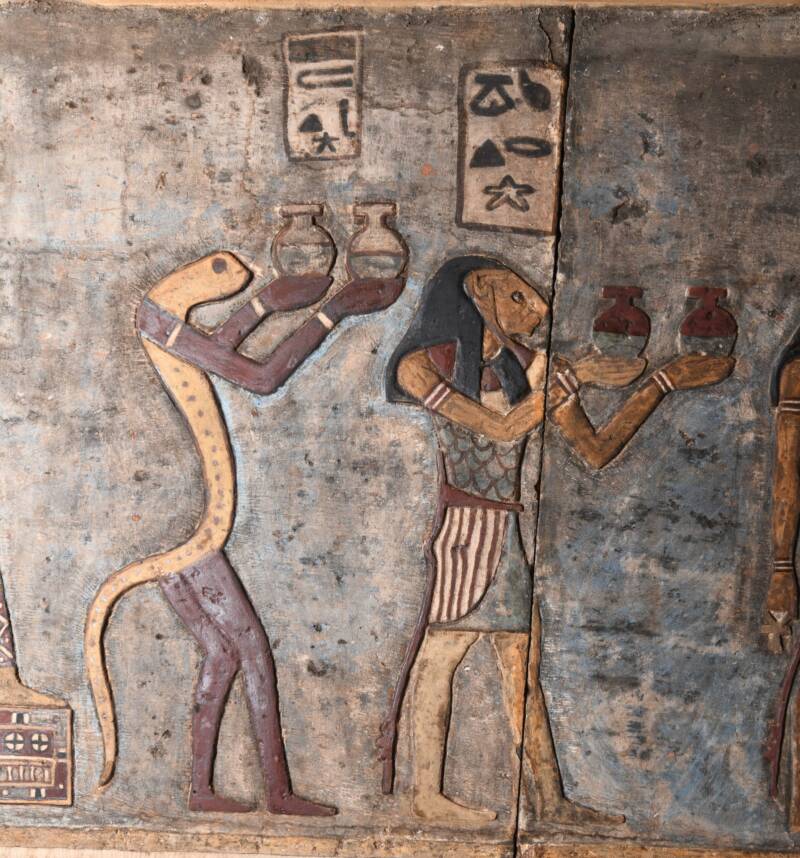Roman megastructure found under a cemetery in France, zodiac paintings discovered in a temple in Egypt, Roman shrine uncovered in the Swiss Alps.
1,900-Year-Old Roman Megastructure Uncovered Beneath A Cemetery In France

Yoann Rabasté/InrapA marvel of ancient engineering, this megastructure includes everything from a sophisticated underfloor heating system known as a hypocaust to pressurized pipes that fed into a fountain.
Founded by the Belgic Remi tribe circa 80 B.C.E., the French city of Reims began to flourish after aligning with Rome some 30 years later. This opulent metropolis boasted an amphitheater, aqueducts, public baths, and the largest population of any city north of the Alps. One of Rome’s wealthiest areas, Reims was a major hub for commerce, culture, and the military for centuries. However, as Rome began to crumble in the fourth century C.E., Reims became increasingly abandoned — and it largely remained that way for the next 1,400 years before finally becoming repopulated. But to this day, Reims is home to some of the most stunning ruins from the heyday of ancient Rome.
Now, archaeologists digging under a cemetery in Reims have uncovered a massive Roman complex from the second century C.E. Equipped with fireplaces, a fountain, and wall paintings of flowers and fruits, this luxurious megastructure may have been a public spa or the estate of a wealthy elite. And though much of the structure was torn down so its materials could be recycled as Rome began to collapse, the remaining tile stacks that served as the building’s foundation are in near-perfect condition even after almost two millennia.
Learn the full story behind this incredible discovery here.
Archaeologists Uncover 2,200-Year-Old Zodiac Paintings In Egypt’s Esna Temple

Ahmed Emam/Ministry of Tourism and AntiquitiesRestored zodiac painting depicting the decans, zodiac signs used to measure the twelve hours of the night.
Located about 36 miles south of Luxor, the Temple of Esna was an important place of worship for ancient Egyptians built to honor Khnum, the ram-headed god of fertility. Recently, archaeologists sifting through centuries of grime on the temple walls uncovered a number of intricate reliefs painted and chiseled by ancient artists.
Now, researchers have just made another remarkable discovery: a series of reliefs depicting the Egyptian zodiac painted on the temple’s ceiling.
Dig deeper in this report.
An Ancient Roman Shrine Surrounded By Offerings Was Just Discovered In The Swiss Alps

Regula Glatz/Aarchaeological Service of the Canton of BernOne of the Roman coins left by the shrine as a supposed offering some two millennia ago.
On a summer day in 2020, a trail enthusiast hiking through the Swiss Alps spotted something on the ground — an ancient Roman coin. This discovery led to a veritable treasure trove, and archaeologists believe that the hiker inadvertently discovered a Roman shrine.
In a plateau between the Ammertenhorn and Wildstrubel mountains, some 8,500 feet above sea level, archaeologists investigating the hiker’s find uncovered 100 coins, 27 rock crystals, 59 Roman shoe nails, a brooch, and a fragmented votive plaque shaped like a leaf.
Read on here.





